Our college has a wide variety of initiatives and research sponsored by the US Department of Defense, with faculty representing a number of different departments conducting studies that affect everything from the materials used by US Armed Forces to career training for both post-service work and for enhancing skills while still on active duty. Highlights showcasing a sampling some of those efforts, the researchers leading the work, and the impact that the selected projects could have in helping improve national security appear over the next few pages, showing the many ways that research done here at UT is helping keep the nation safe.
By David Goddard.
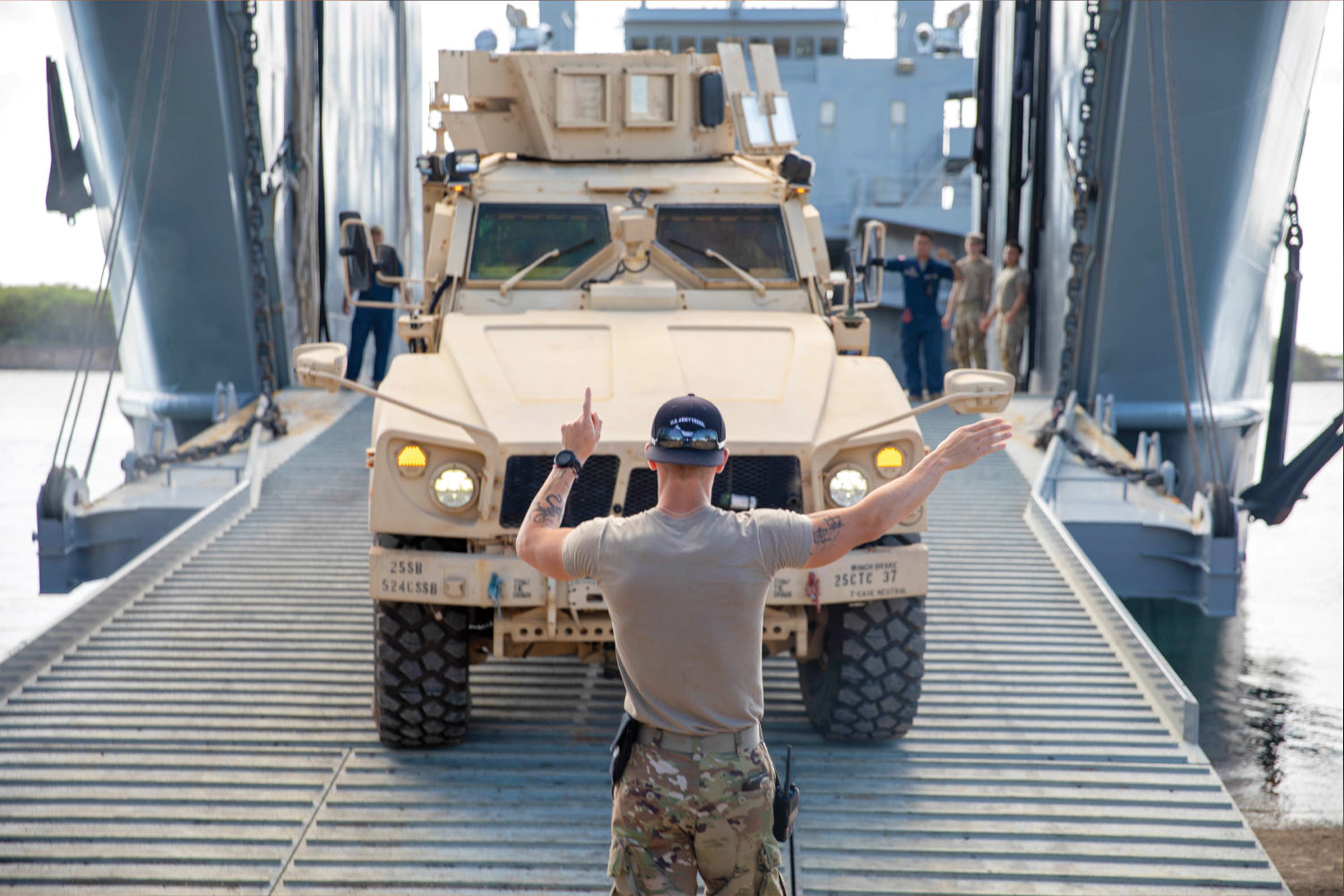 Photo courtesy of the Department of Defense
Photo courtesy of the Department of Defense
Information Fusion for Improved Prognostics and Health Management of Military Vehicles
Faculty Member: Southern Faculty Fellow Jamie Coble (NE)
Sponsor: Office of Naval Research
Wheeled military vehicles face a number of external factors that can determine their reliability, longevity of service, and ease of repair. Condition-based maintenance (CBM) programs exist for aviation, where aircraft are monitored for flight readiness following each mission. Coble is developing a CBM program for wheeled vehicles that will take into account challenges and realities that apply more specifically to their unique uses and capabilities, including factors such as distance from support and supply teams, occasional less rigorous documentation of maintenance than their aviation counterparts, and their reduced overall cost as compared to aircraft and other pieces of the military’s arsenal. Coble’s work will include proof-of-concept testing and demonstrations to show validity of fluid analysis and the effects of vibration on the vehicles, advanced diagnostics and prognostics, and debris monitoring. Once complete, the knowledge gained may be used to better maintain and prepare the military’s fleet of wheeled vehicles, resulting in reduced costs and improved performance. Research Assistant Professor David “Butch” Irick in the Department of Mechanical, Aerospace, and Biomedical Engineering, is co-PI on the project.
 Photo courtesy of Oak Ridge National Laboratory.
Photo courtesy of Oak Ridge National Laboratory.
Integrating Quantum and Traditional Computing in Optimization
Faculty Member: Associate Professor James Ostrowski (ISE)
Sponsor: Air Force Office of Scientific Research
While quantum computing continues to hold promise in a number of areas, one thing holding it back from further adaptation—and even raising questions about the true potential of the technology itself—is the potential for delays in processing complex problems related to optimization. Ostrowski’s work is to integrate standardized computing methods with quantum annealing, a process in which possible solutions are presented by running through a large number of potential outcomes before selecting optimal results. Although it won’t provide a definitive solution, this process will allow researchers to quickly determine the likely area in which the most optimal answer lies, helping improve rates of optimization by limiting the amount of data that must be studied. Ostrowski and his team can then study the various processes and outcomes that the technology presents in every given use, helping even more closely refine the overall system for more focused results. Understanding and refining the system will, in turn, influence future computing design.
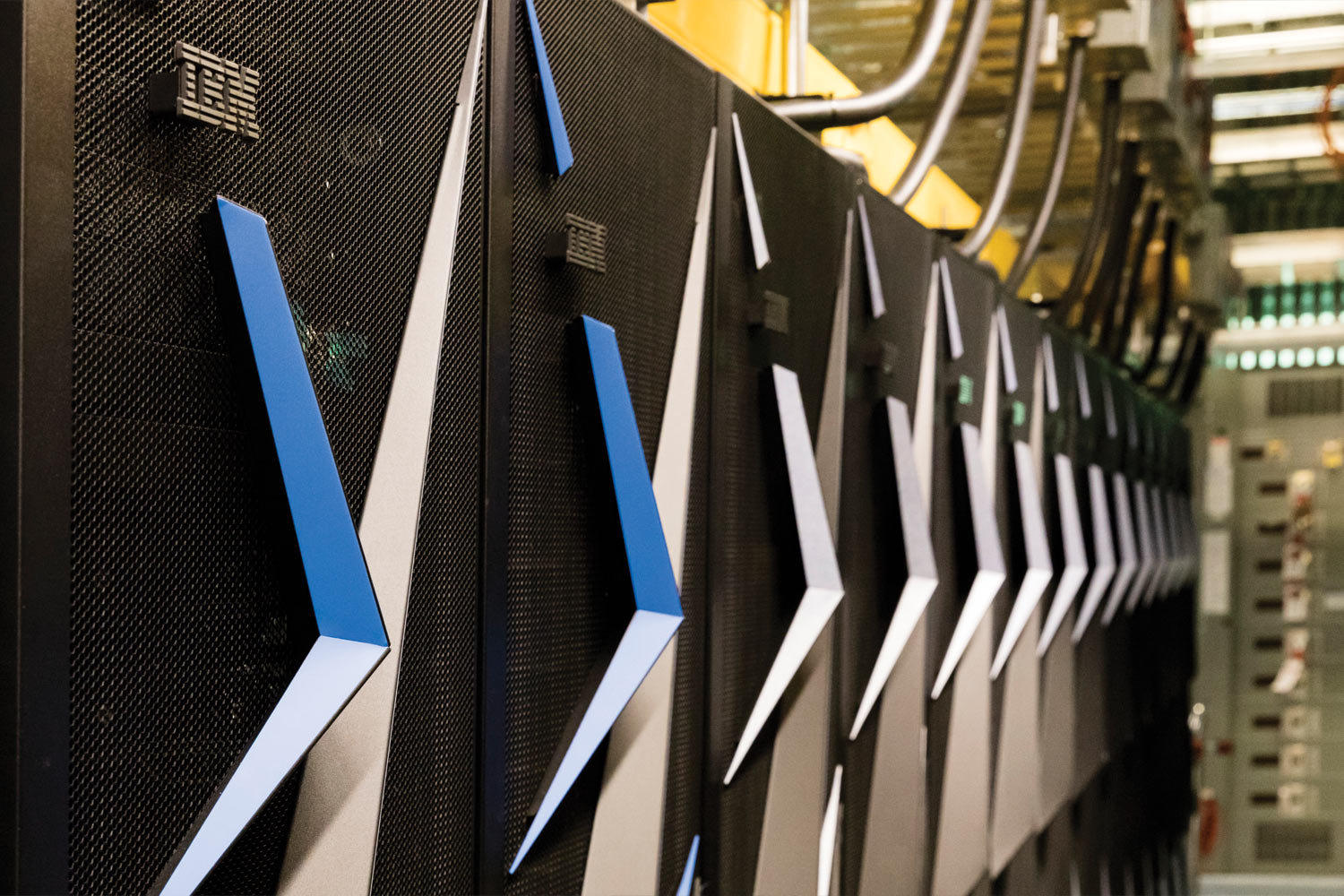 Photo courtesy of Oak Ridge National Laboratory.
Photo courtesy of Oak Ridge National Laboratory.
Problem Structure and the Quantum Advantage: Theory and Algorithms
Faculty Member: Associate Professor James Ostrowski (ISE)
Sponsor: Defense Advanced Research Projects Agency,
Optimization with Noisy Intermediate-Scale Quantum devices
Algorithms play an important role in advanced computing, and this project seeks to better understand how certain computational behaviors, uses, or inputs can sometimes throw those algorithms off, thus interfering with the performance and reliability of the overall computing process. Ostrowski and his team are developing a study to look at how the structure of a computational system affects optimization, particularly within quantum systems. The team plans to address several questions about the theory and design of such systems, including looking at particular graphing situations, the type of cycling being used in processing, and the relationship between deep circuits and the setup of the system. Answering these questions will demonstrate to the team whether or not what are currently theoretical quantum applications can actually be achieved, what is the best design if those applications are possible, and what combinations work best. Ostrowski is teaming with Professor George Siopsis (Physics) and Travis Humble and Sarah Powers at Oak Ridge National Laboratory.
 Photo courtesy of U.S. Air Force.
Photo courtesy of U.S. Air Force.
Brain-Inspired Networks for Multifunctional Intelligent Systems in Aerial Vehicles
Faculty Member: James Conklin Fellow & Associate Professor Andy Sarles, MABE
Sponsor: Air Force Office of Scientific Research,
Multidisciplinary University Research Initiative
Two of the biggest challenges facing the widespread introduction of truly smart technologies vehicles are the significant amounts of energy that high performance computers require for implementing artificial intelligence and the limitations on size that traditional, silicon-based components impose on circuitry. Sarles and his team have turned to the human brain for inspiration to help answer that challenge. Through this work, they are developing artificial neural networks that mimic signal processing in neurons and synapses. Their unique approach centers around creating memristors, variable resistors that have the ability to remember prior electrical activity. Through the use of such technology, Sarles and his team are supporting next generation smart technologies achieved through hardware instead of software. This has the potential to dramatically decrease weight and energy consumption, while at the same time leading to adaptive systems that can think for itself when every moment counts, such as giving drones the ability to self-screen a particular area during a search and rescue mission.
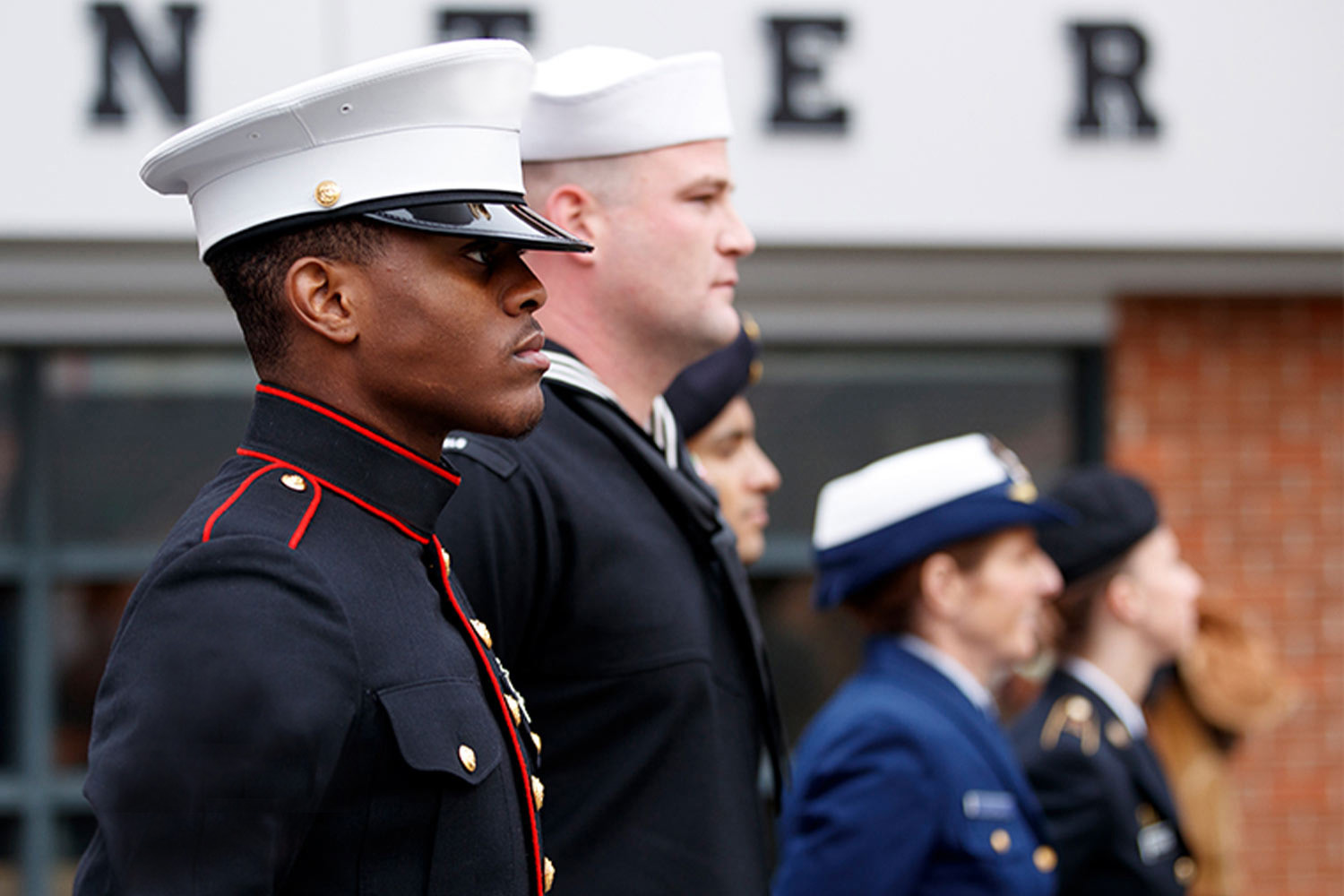
Data Analytics, Cybersecurity, and Advanced Manufacturing for the Modern Soldier: An Integrated ROTC Research and Training Program
Faculty Member: Professor Tony Schmitz (MABE)
Sponsor: Office of Naval Research
The main thrusts of this program are cybersecurity, advanced manufacturing, data analytics, and processing, with a focus on training current ROTC students in STEM fields. Although sponsored by the US Navy, students from the Army, Marine Corps, and Air Force are all also given research opportunities and training under this program. UT’s partnership includes Kennesaw State University, providing students enrolled at either institution access to instruction from the other university, in addition to the knowledge and research they gain at their home campus. Students complete work online, at their own pace, with lab opportunities planned for when fully in-person activities can resume, including at ORNL’s Manufacturing Demonstration Facility.
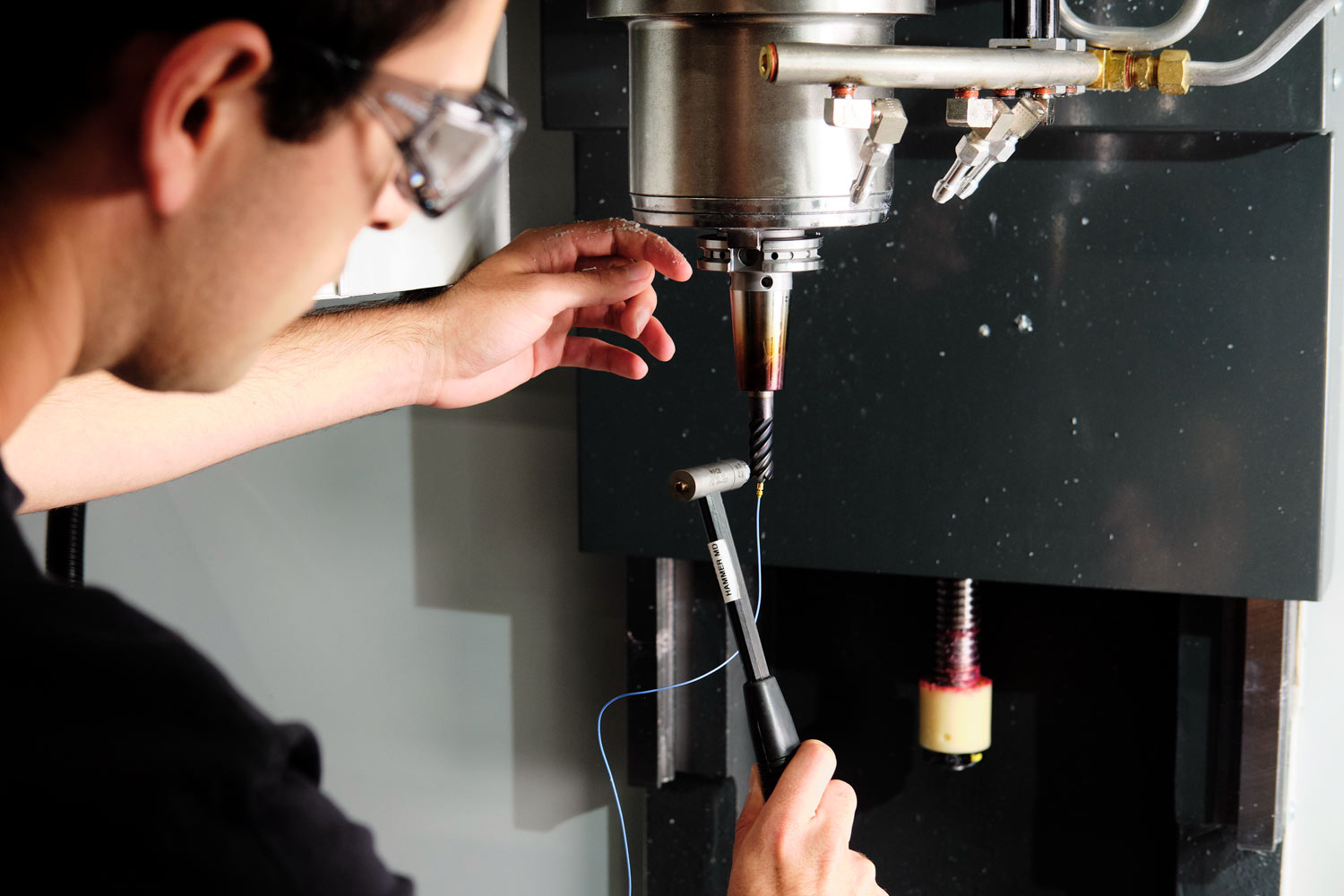
America’s Cutting Edge (ACE) CNC Machining Training Program
Faculty Member: Professor Tony Schmitz (MABE)
Sponsor: Department of Defense Industrial Base Analysis and Sustainment (IBAS) Program
Helping better prepare and equip current and future generations of the US machine tool workforce is the goal of this program, which introduces machining concepts to participants from high schools, community colleges, universities, and businesses eager to give their current employees a chance to develop new skills and knowledge surrounding the changing landscape of manufacturing. Computer numerical control machining and computer aided manufacturing (CAM) play major roles in the course, with tutorials and instruction given that lead to the production of an example part over the course of several lessons. The critical role of vibration in the selection of CAM operating parameters is a key aspect of the training, including an app that enables participants to simulate the performance of machining operations on their computer. The no-cost program is both online and in-person. The online component has over 800 registrations since its December 7 launch. An optional, one-week in-person training is planned for Summer 2021 at Pellissippi State Community College, UT, and ORNL’s Manufacturing Demonstration Facility, conditions permitting. The in-person training will be offered to a limited number of students who complete the online class by March 1, 2021.
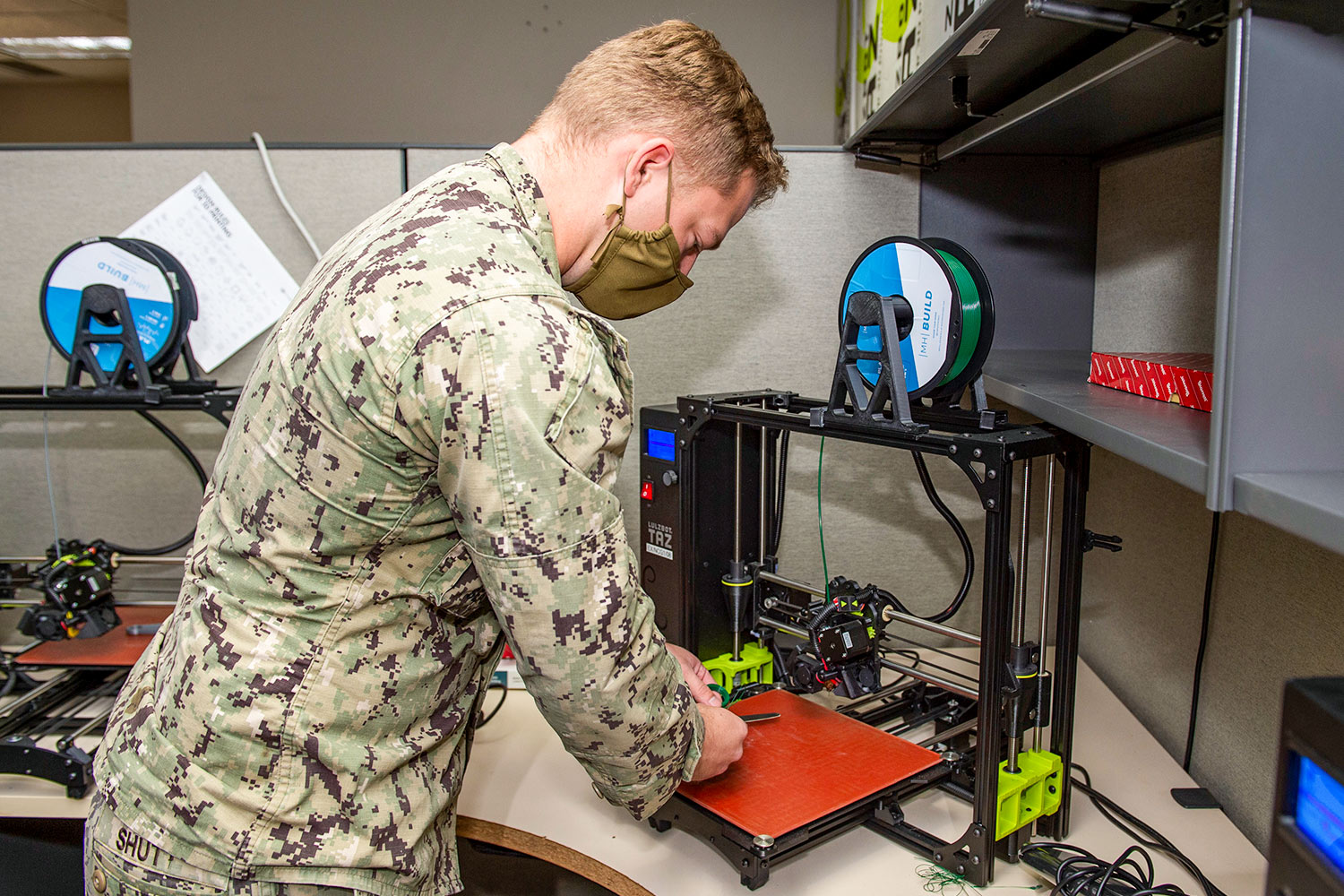 Photo courtesy of U.S. Navy.
Photo courtesy of U.S. Navy.
A Multi-Scale, Multi-Physics Solution to Inform Water Bottle Recycling at US Navy Makerspaces
Faculty Member: Jessie Rogers Zeanah Faculty Fellow Stephanie TerMaath (MABE)
Sponsor: Naval Sea Systems Command
This project’s goal is to help prepare students for potential, relevant careers in the US Navy through a trio of senior design projects that have a direct correlation with Navy research and goals. All projects are developing Fused Filament Fabrication (FFF) printing techniques to support on-demand fabrication of small customized parts using recycled materials. Each project contributes to enabling the rapid design and reliable printing of customized parts that are representative of those that may be needed during deployments. Two of the projects are investigating the applicability of Classical Laminate Theory for efficient FFF part design by 1) investigating the envelope of prediction accuracy for the rapid design of recycled AM parts with optimized mechanical properties, and 2) demonstrating part prints using dual materials for customized designs that reduce weight by utilizing the most advantageous mechanical properties of each material. The third project is designing a refitted FFF desktop printer that can utilize shredded, recycled materials— in this case, water bottles. The students will then take this knowledge and apply it in recycling composite wastes from Navy ships for use as source material.
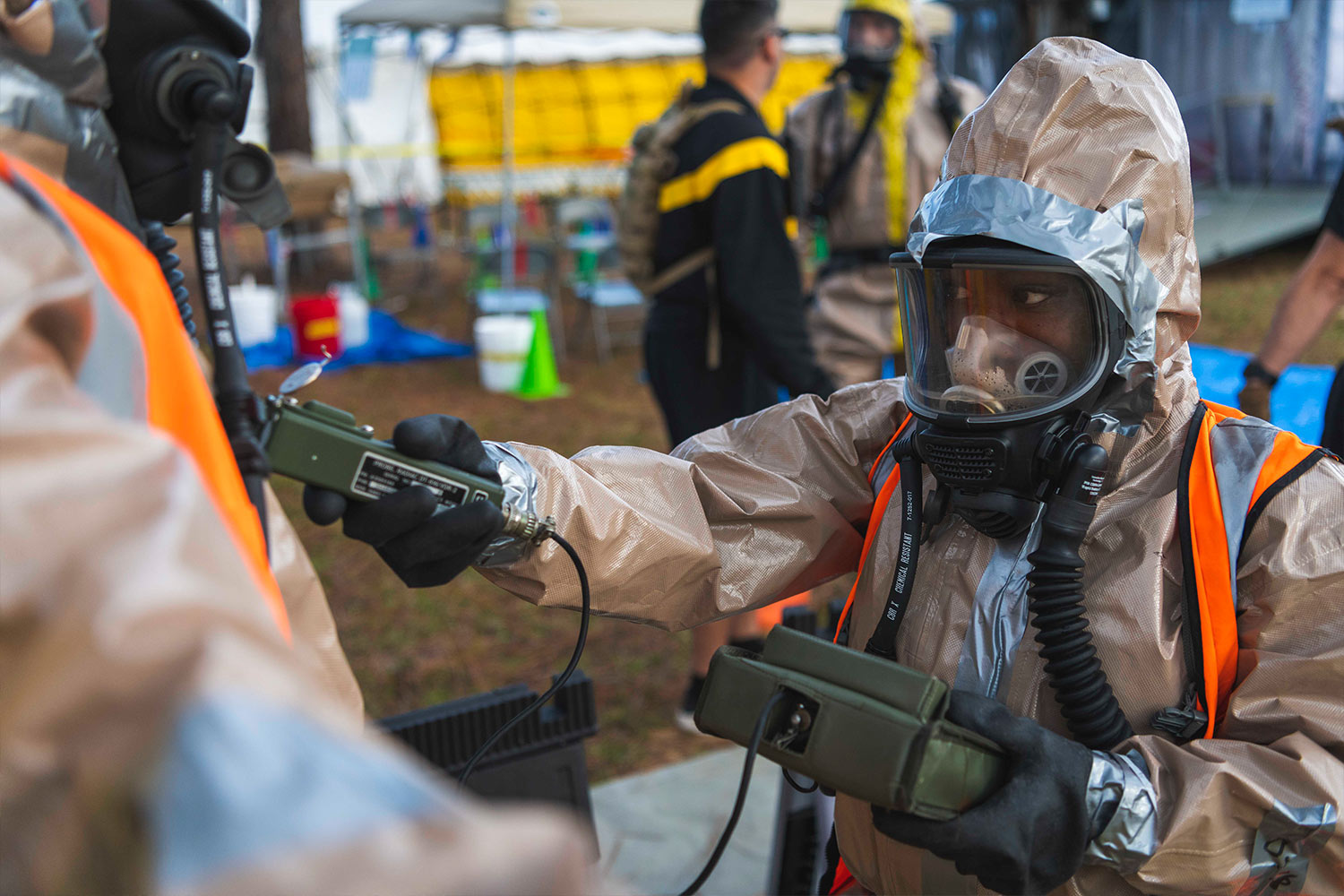 Photo courtesy of the Department of Defense.
Photo courtesy of the Department of Defense.
High-Z Halide Scintillators for Gamma-Ray Detection
Faculty Member: Assistant Professor Mariya Zhuravleva (MSE)
Sponsor: Defense Threat Reduction Agency,
Fundamental Research to Counter Weapons of Mass Destruction
Scintillators, materials that glow in the presence of radiation, play a role in a number of fields, one of which is securing the nation from the possible use of radioactive or fissile materials in a possible terror attack. Research in the last few decades has led to the discovery and development of several types of scintillators, but work continues to be done to improve certain properties, including range, effectiveness, sensitivity, and cost. This project aims to build on recent breakthroughs involving replacing certain elements with high Z components, which are materials with a high atomic number. An example of this might be using thallium in place of potassium or cesium in developing new scintillators. This substitution of core materials allows the new scintillators to “see” better through otherwise-shielded containers that use materials such as lead in an attempt to conceal radioactive contents within them, helping border officials more effectively scan for illicit cargo. Radiation Monitoring Devices (RMD) is the overall lead on the project.
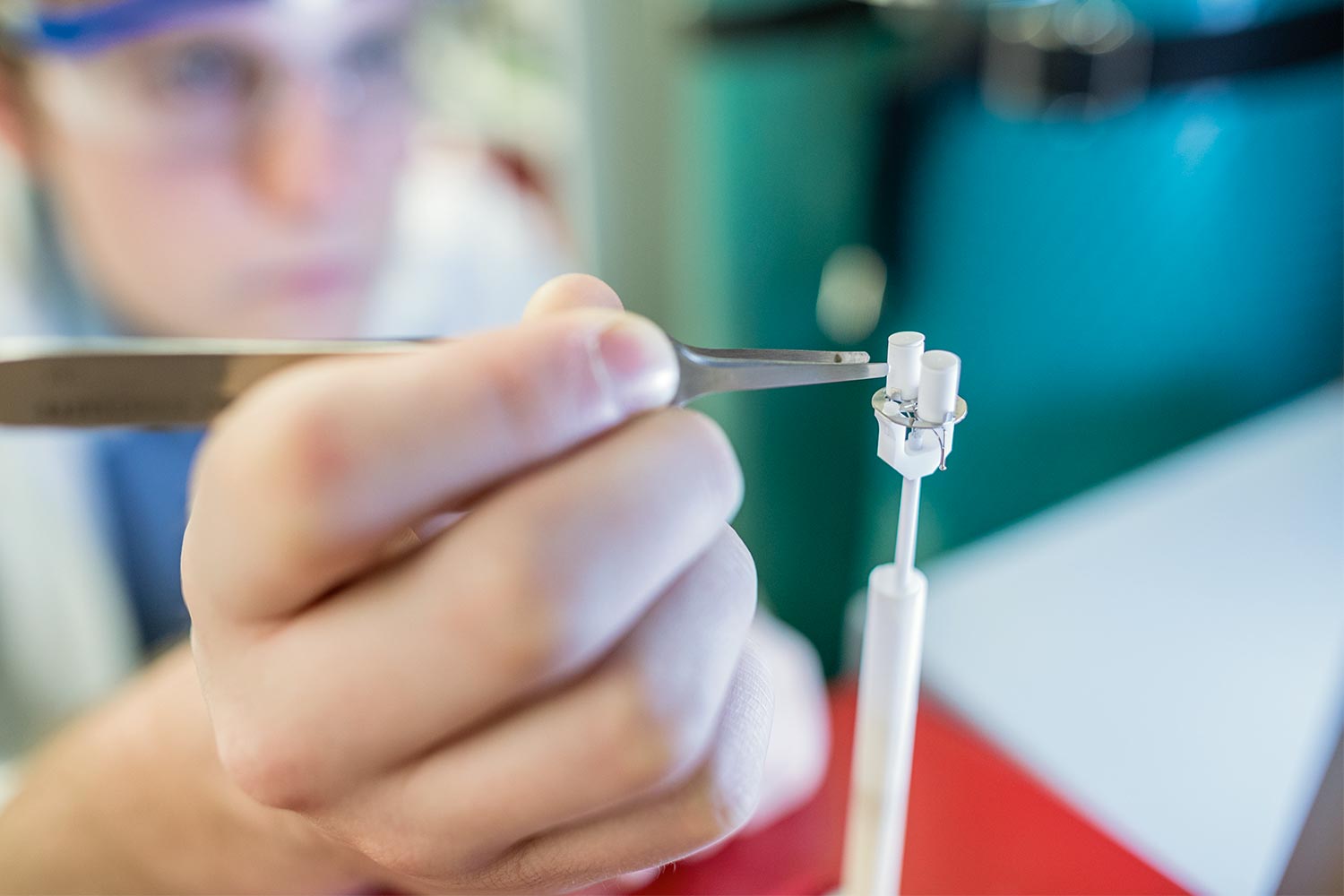
Materials Engineering of Alkali Halide and Rare Earth Halide Scintillators Phase 2
Faculty Member: Assistant Professor Mariya Zhuravleva (MSE)
Sponsor: Defense Threat Reduction Agency,
Fundamental Research to Counter Weapons of Mass Destruction
This project is the second part of a program aimed at growing specifically designed single crystals for use in scintillation, such as thallium-activated cesium iodide or cerium bromide designs. In particular, the team hopes to study the effect of codopants—materials that are added to alter certain properties of other materials—on the scintillators. Halides are materials created by combining halogen with other elements that meet certain conditions. They have high meting points and are often used in ways that take advantage of their ability to provide strong luminescence, making them ideal for scintillators. Crystals created through this project should provide an advancement in scintillator crystal growth and technology, opening up new areas of research and application. At its conclusion, if successful, the knowledge gained could lead to a third phase of discovery, characterization, and development of scintillators. RMD is the overall lead on the project.
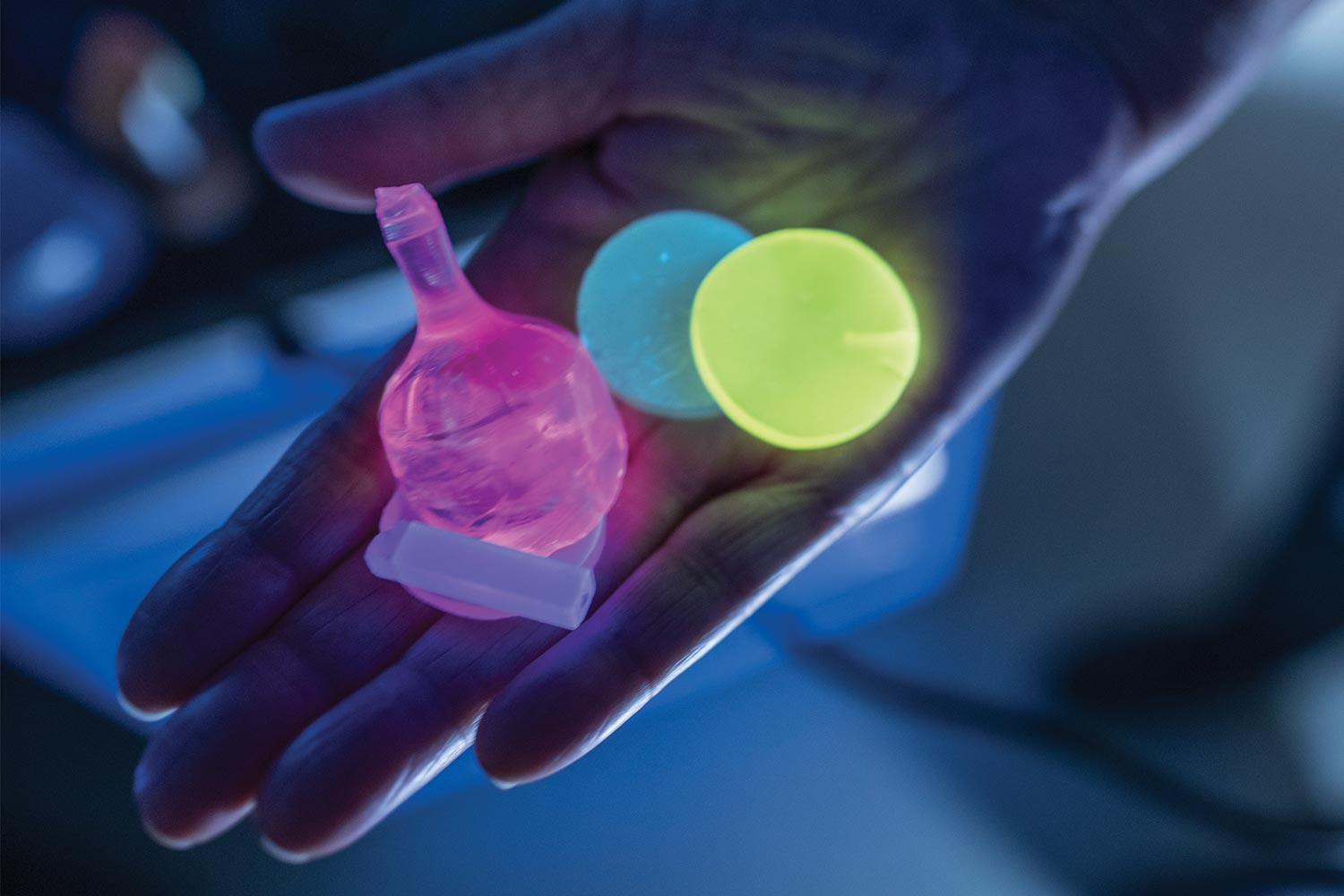
Mixed Elpasolite Scintillators Phase 2
Faculty Member: Assistant Professor Mariya Zhuravleva (MSE)
Sponsor: Defense Threat Reduction Agency,
Fundamental Research to Counter Weapons of Mass Destruction
This project is focused on the development of mixed halogen ternary halide scintillators with an elpasolite-type crystal structure for improved detection and identification of ionizing radiation. Elpasolites are colorless, six-sided crystals containing a particular compound as part of their makeup. The second part of the project will use composition engineering via optimization of chlorine-bromine-iodine ratio, which is expected to stabilize the structure, eliminate inclusions, and enable scale-up of crystal growth technology to produce the crystal sizes required for nuclear non-proliferation applications. RMD is the overall lead on the project.
